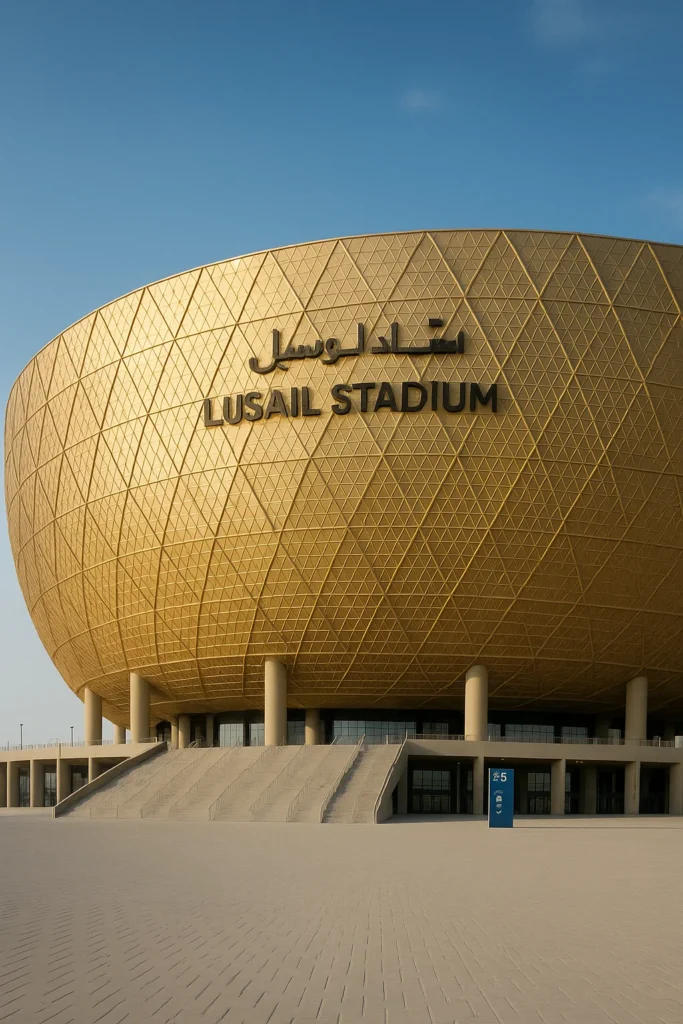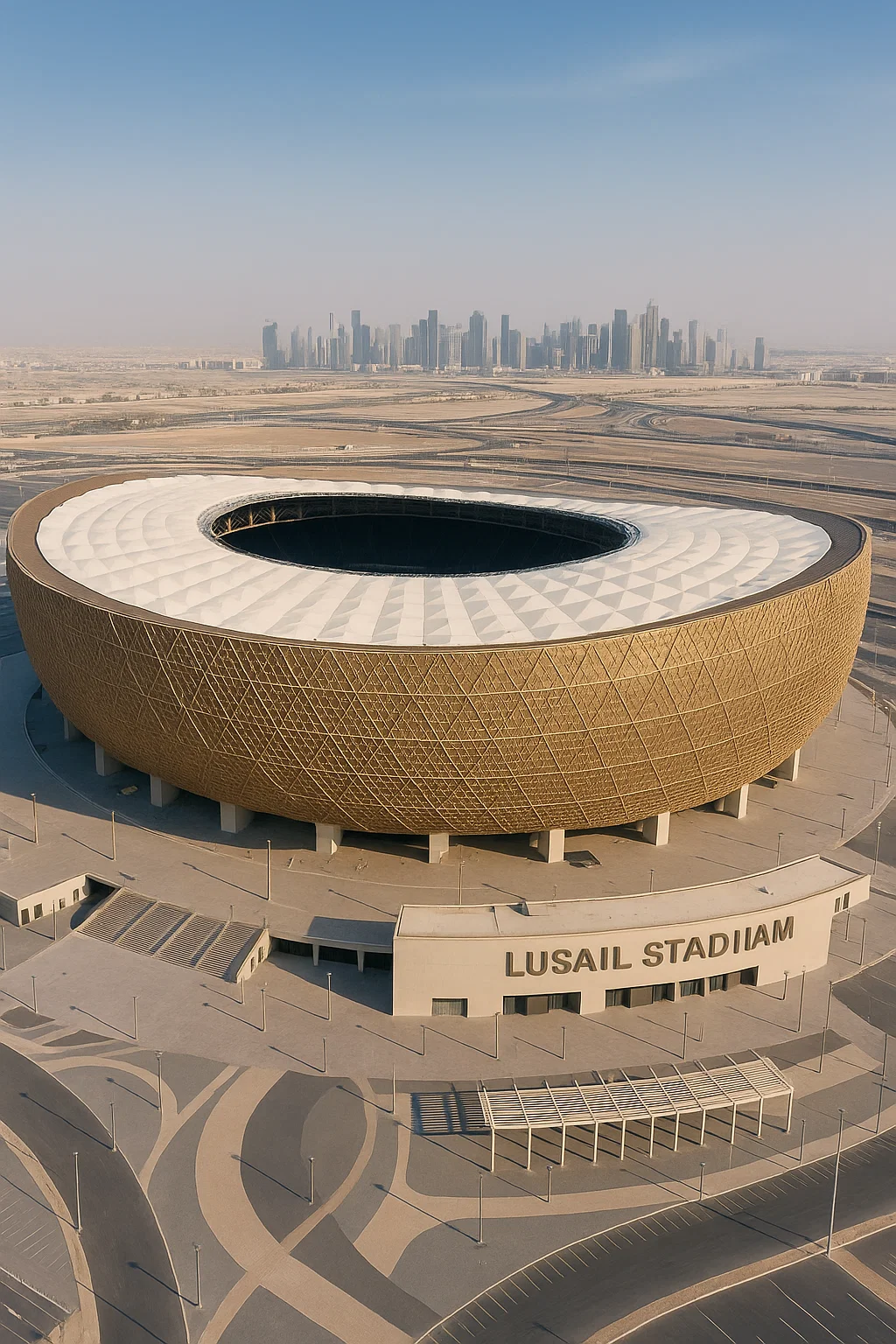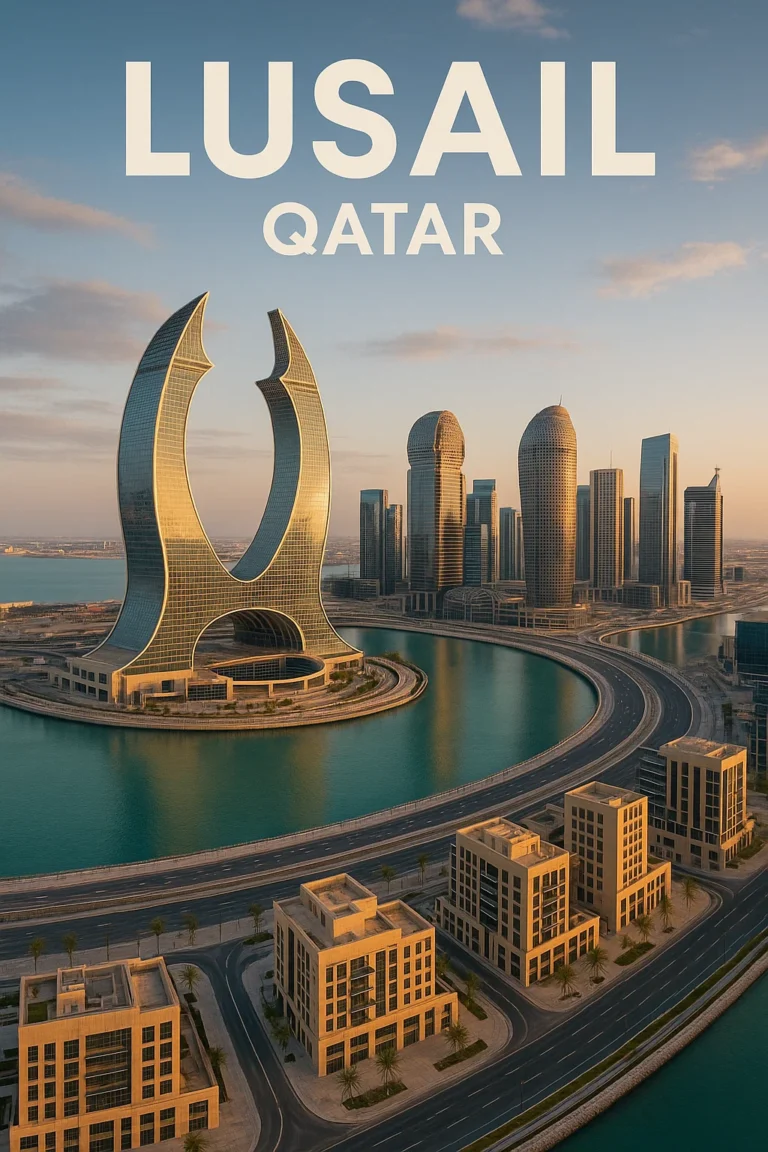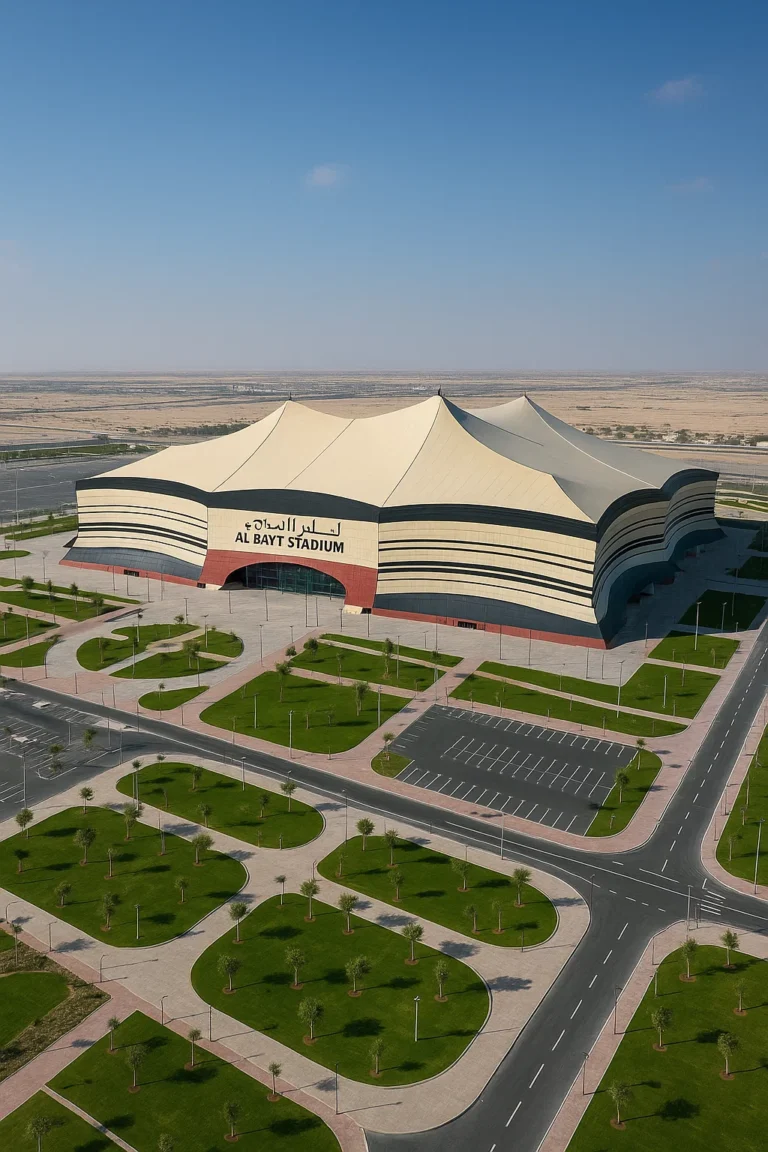Lusail Stadium Qatar – The Iconic Heart of Modern Football
Standing proudly in the futuristic city of Lusail, just 15 kilometers north of Doha, the Lusail Stadium is one of the most iconic sporting landmarks in the world. Known for hosting the FIFA World Cup 2022™ final between Argentina and France, this architectural marvel symbolizes Qatar’s bold vision, innovation, and sporting legacy. With a seating capacity of 88,966, it is not only the largest stadium in Qatar but also the largest in the Middle East — a global masterpiece that perfectly blends heritage, sustainability, and modern design.
History and Construction of Lusail Stadium
The journey of Lusail Stadium began as part of Qatar’s bid to host the 2022 FIFA World Cup. Preparatory work started in 2015, followed by full-scale construction on April 11, 2017. The project was a collaboration between Foster + Partners (design architect), Populous Holdings (sports architect), Arup (engineering consultants), and contractors HBK Contracting and China Railway Construction Corporation.
Despite challenges and delays, the stadium was officially completed in 2021 and inaugurated on September 9, 2022. The first major match hosted here marked the beginning of a new era for Qatari sports and urban development.

Architectural Brilliance and Design Inspiration
The Lusail Stadium is a marvel of engineering and artistry. Designed by Foster + Partners, the arena draws inspiration from the fanar lantern, symbolizing the interplay of light and shadow in traditional Arabian culture. Its golden façade is made up of 4,200 triangular aluminum panels, forming intricate geometric patterns inspired by Islamic art and Qatari craftsmanship.
The exterior resembles a golden bowl, a nod to the traditional vessels used for dates in Qatar — a cultural reference that connects the nation’s past with its future.
Structure and Materials
- Weight of outer structure: 30,000 tons
- Roof area: 45,000 square meters
- Diameter: 310 meters
- Columns: 48 slanted pillars forming 24 V-shaped supports
- Facade material: Triangular aluminum plates (60,000 m² total surface)
This intricate design is not only visually stunning but also engineered for efficiency, airflow, and durability in Qatar’s desert climate.
Capacity and Seating Experience
With an official capacity of 88,966 seats, the Lusail Iconic Stadium offers an unmatched viewing experience. The seating bowl is divided into two large tiers, each further sectioned to ensure optimal sightlines, accessibility, and crowd flow.
During the 2022 FIFA World Cup, the stadium was configured to seat approximately 80,000 spectators, making it the perfect venue for global finals and large-scale concerts.
In the future, the stadium’s capacity will be downsized to around 40,000, with the upper tiers repurposed for community use — including schools, clinics, retail spaces, and sports facilities.
Sustainability and Innovation
Solar Cooling Technology
Lusail Stadium features an advanced solar-powered cooling system that maintains comfortable indoor temperatures for fans and players, even during Qatar’s hottest months. This innovation supports Qatar’s sustainability goals and ensures a zero-carbon footprint.
Five-Star Sustainability Rating
The stadium earned a GSAS (Global Sustainability Assessment System) five-star rating for energy efficiency, water conservation, and construction sustainability — a benchmark achievement in global sports architecture.
Sustainable Downsizing
Post-tournament, thousands of modular seats will be donated to developing countries, continuing the spirit of sustainability and global contribution that defines the stadium’s legacy.
The FIFA World Cup 2022™ Legacy
Lusail Stadium etched its name in football history on December 18, 2022, when it hosted the World Cup final — one of the most dramatic matches ever played, as Argentina triumphed over France.
Over the course of the tournament, ten major matches took place here, with the stadium serving as the centerpiece of the world’s biggest sporting event. The atmosphere, design, and scale made it a fitting symbol of Qatar’s ambition to blend culture, innovation, and passion for football.
Facts and Figures at a Glance
| Feature | Details |
|---|---|
| Location | CFCR+75, Lusail, Qatar |
| Coordinates | 25°25′15.1″N 51°29′25.4″E |
| Construction Period | 2017–2021 |
| Opening Date | 9 September 2022 |
| Capacity | 88,966 |
| Cost | $767 million |
| Architects | Foster + Partners, Populous |
| Contractors | HBK Contracting, China Railway Construction Corporation |
| Owner | Qatar Football Association |
| Client | Supreme Committee for Delivery & Legacy |
| Awards | 2023 Prix Versailles, Architizer A+ Jury Winner |
Awards and Recognition
In 2023, Lusail Stadium received two major international awards:
- 🏆 Prix Versailles – UNESCO World Architecture & Design Award (Special Prize for Exterior)
- 🏆 Architizer A+ Award (Stadium & Arena Category)
These accolades recognize its innovative design, cultural symbolism, and sustainability excellence.
Visitor Information and Stadium Tours
How to Get There
- By Metro: Take the Red Line to Lusail QNB Station — a 15-minute walk from the stadium.
- By Car: The venue offers extensive parking facilities with direct access from Lusail Expressway.
- By Bus or Taxi: Regular services connect Lusail Stadium to major Doha districts and Hamad International Airport.
Tours and Timings
Lusail Stadium offers guided tours where visitors can explore its architecture, locker rooms, media zones, and player tunnels.
- Tour hours: 10:00 AM – 6:00 PM
- Tickets: Available online or at the stadium’s visitor center
Future of Lusail Stadium
The Lusail Iconic Stadium is not just a monument of the past — it represents Qatar’s commitment to community development and sports diplomacy. The transformation plan includes:
- A multipurpose arena for 40,000 spectators
- Spaces for schools, retail, and healthcare
- A public plaza under the preserved roof structure
- Community sports facilities
This adaptive reuse ensures that the stadium remains a living landmark, serving both locals and international visitors for decades to come.
Cultural Significance
Lusail Stadium stands as a symbol of unity, reflecting Qatar’s cultural heritage through its design and purpose. The golden façade mirrors the warmth of Arabian hospitality, while the structure’s circular geometry reflects community and inclusiveness.
Every design decision — from the fanar-inspired patterns to the sustainable technologies — tells the story of a nation looking toward the future while honoring its past.
FAQs
1. What is the capacity of Lusail Stadium?
The stadium can seat up to 88,966 spectators, making it the largest in Qatar and the Middle East.
2. What makes Lusail Stadium unique?
Its solar-powered cooling, zero-carbon design, and Arab-inspired architecture set it apart from any other football venue in the world.
3. Can visitors tour Lusail Stadium?
Yes. Visitors can book guided tours that showcase the stadium’s architecture, sustainability features, and World Cup legacy.
4. What will happen to Lusail Stadium after the World Cup?
It will be transformed into a community complex with schools, shops, clinics, and sports facilities, preserving the stadium’s iconic roof.
5. Which match was most famous at Lusail Stadium?
The 2022 FIFA World Cup Final, where Argentina defeated France, is the stadium’s most historic moment.
Final Thoughts
The Lusail Iconic Stadium is more than a sports venue — it’s a symbol of Qatar’s transformation into a global hub for culture, architecture, and innovation. Its blend of heritage-inspired design, environmental consciousness, and futuristic vision ensures that it remains a lasting landmark, both in football and beyond.
As Qatar prepares for future tournaments like the FIFA Arab Cup 2025™, Lusail Stadium will continue to shine as the heart of sports in the Middle East, a beacon for sustainability, and a proud reflection of Qatari ambition.







